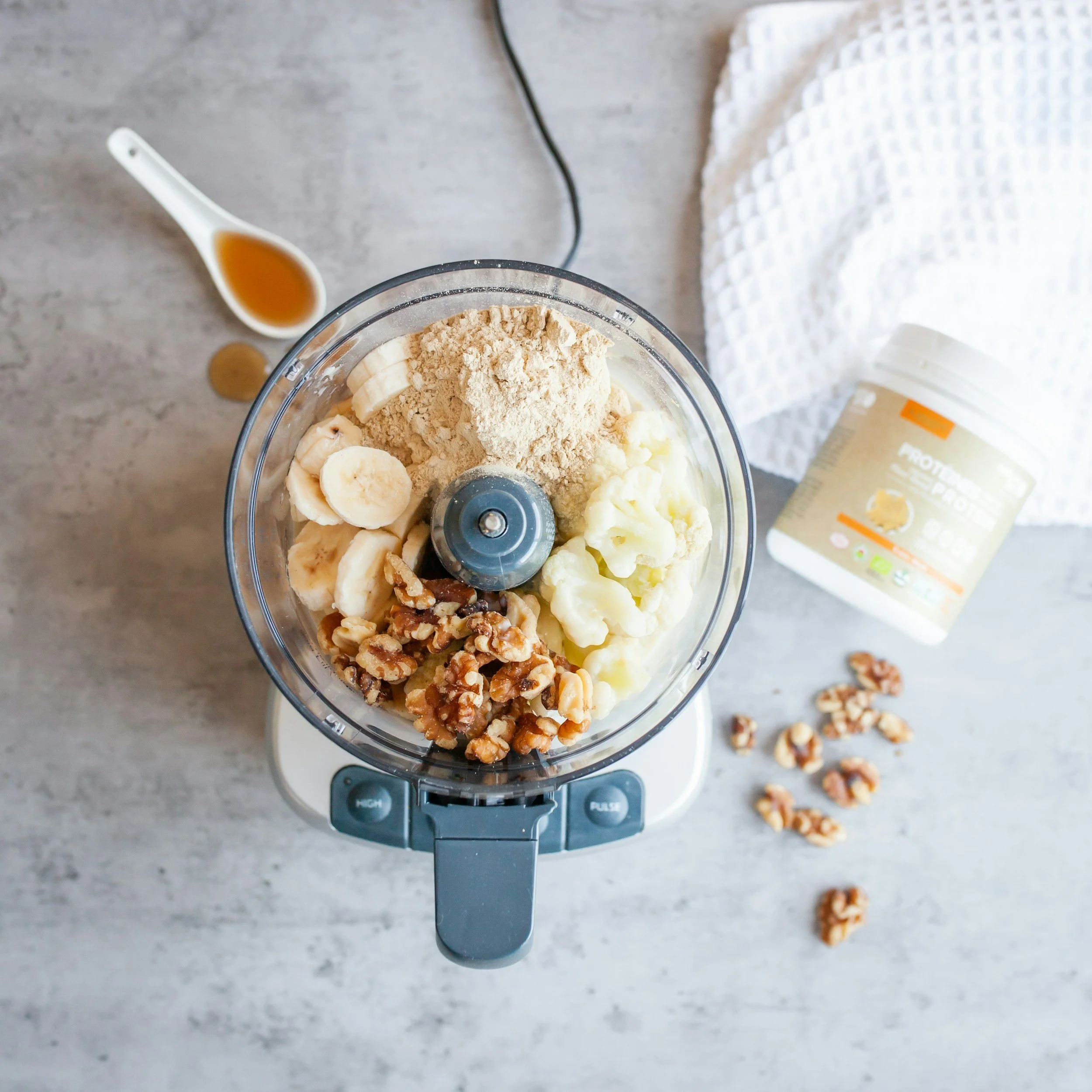High-Protein Diets and GLP-1 Medications: A Dietitian’s Guide to Fat Loss Without Muscle Loss
GLP-1 medications like Ozempic, Wegovy, and Mounjaro have changed the game for people struggling to lose weight. But what you eat while taking them—especially your protein intake—can be the difference between losing fat or losing muscle.
As a registered dietitian who works closely with clients on GLP-1s, I’ve seen how effective a high-protein strategy can be. In this post, I’ll walk you through how much protein you need, the best sources, how to structure meals, and simple ways to stay full and strong while shedding weight.
What Are GLP-1 Medications and How Do They Work?
GLP-1 receptor agonists like semaglutide (Ozempic/Wegovy) and tirzepatide (Mounjaro) are injectable medications that mimic the body’s GLP-1 hormone. This hormone helps regulate appetite, blood sugar, and insulin response.
Benefits of GLP-1 medications include:
Decreased hunger and cravings
Feeling full faster and longer
More stable blood sugar
Significant fat loss when combined with diet
However, lower appetite also means less food—and less protein—unless you’re intentional.
Why Protein Matters on GLP-1 Medications
Protein does more than build muscle. It plays a key role in body composition, metabolism, and satiety, especially during rapid weight loss.
Here’s why prioritizing protein matters:
Muscle preservation: GLP-1s reduce appetite, which may lead to under-eating protein and loss of lean body mass.
Fullness and satisfaction: Protein-rich meals keep you fuller longer, making it easier to maintain calorie deficits.
Metabolism maintenance: Muscle mass helps maintain resting metabolic rate, so losing it slows fat loss.
To avoid feeling weak, flabby, or undernourished, protein should be a non-negotiable part of your GLP-1 strategy.
How Much Protein Do You Need While on GLP-1s?
A general rule of thumb: aim for 0.8 to 1 gram of protein per pound of your goal body weight per day.
Protein goals by individual:
Women: 100 to 130 grams per day
Men: 130 to 160 grams per day
If appetite is low: Prioritize protein first in every meal or snack
If you need help determining your individual protein needs, you can book a session here.
Best High-Protein Foods for People Taking GLP-1 Medications
Getting enough protein on a lower appetite requires smart, efficient food choices. Here are the most effective sources:
Whole Food Protein Sources:
Chicken breast, turkey, lean beef
Eggs and egg whites
Tofu, tempeh, edamame
Greek yogurt, cottage cheese
Lentils, beans, legumes
Protein Supplements and Easy Options:
Premier Protein Shakes – 30g protein, low sugar
Orgain Clean Whey – clean ingredients, gentle on digestion
Fairlife Core Power – high-quality ready-to-drink protein
Focus on foods that are easy to chew, digest, and prepare—especially when appetite is reduced.
Protein Timing and Tips to Maximize Fullness
Consistent, spaced-out protein intake supports lean body mass and appetite control.
Best practices:
Include 25 to 40 grams of protein at each meal
Eat protein-first, especially if you fill up quickly
Add protein-rich snacks like shakes, cottage cheese, or boiled eggs
Pair protein with fiber (vegetables, seeds, legumes) to increase fullness and digestive support
If you’re unsure how to structure this, I’ve created downloadable GLP-1-friendly meal plans and high-protein recipes to guide you.
Sample High-Protein Day of Eating on GLP-1 Medication
Here’s what one day might look like if your goal is 120–130g of protein:
Breakfast (30g)
¾ cup Greek yogurt
2 tbsp chia seeds
½ cup berries
1 scoop collagen protein
Lunch (35g)
4 oz grilled chicken
½ cup quinoa
1 cup roasted vegetables
Olive oil or tahini drizzle
Dinner (35g)
½ block tofu stir-fried with mixed vegetables
½ cup rice
1 tbsp sesame oil
Snack (25g)
2 hard-boiled eggs + 2 oz turkey jerky
More meal examples and personalized planning tools are available in my downloadable nutrition guides.
Frequently Asked Questions About Protein and GLP-1s
What happens if I don’t eat enough protein on GLP-1 medication?
You may lose muscle instead of fat. This can result in decreased strength, poor energy, and a slowed metabolism.
Can protein help with nausea from GLP-1s?
Yes. Starting the day with a small, protein-rich meal like scrambled eggs or a shake often helps ease morning nausea.
What’s the best protein shake for GLP-1 users?
Look for high-protein, low-sugar options like Premier Protein or Orgain Whey. These are easy on the stomach and convenient for low-appetite days.
Protein Is Essential for Sustainable Weight Loss on GLP-1s
GLP-1 medications can help you lose weight—but what you eat matters. Without enough protein, you risk losing valuable muscle mass, feeling fatigued, and stalling your metabolism.
To recap:
Aim for 100–150 grams of protein per day
Prioritize protein in every meal and snack
Use shakes and powders when appetite is low
Combine protein with fiber-rich foods
Follow a meal structure that fits your schedule and energy needs
Looking for more guidance?

